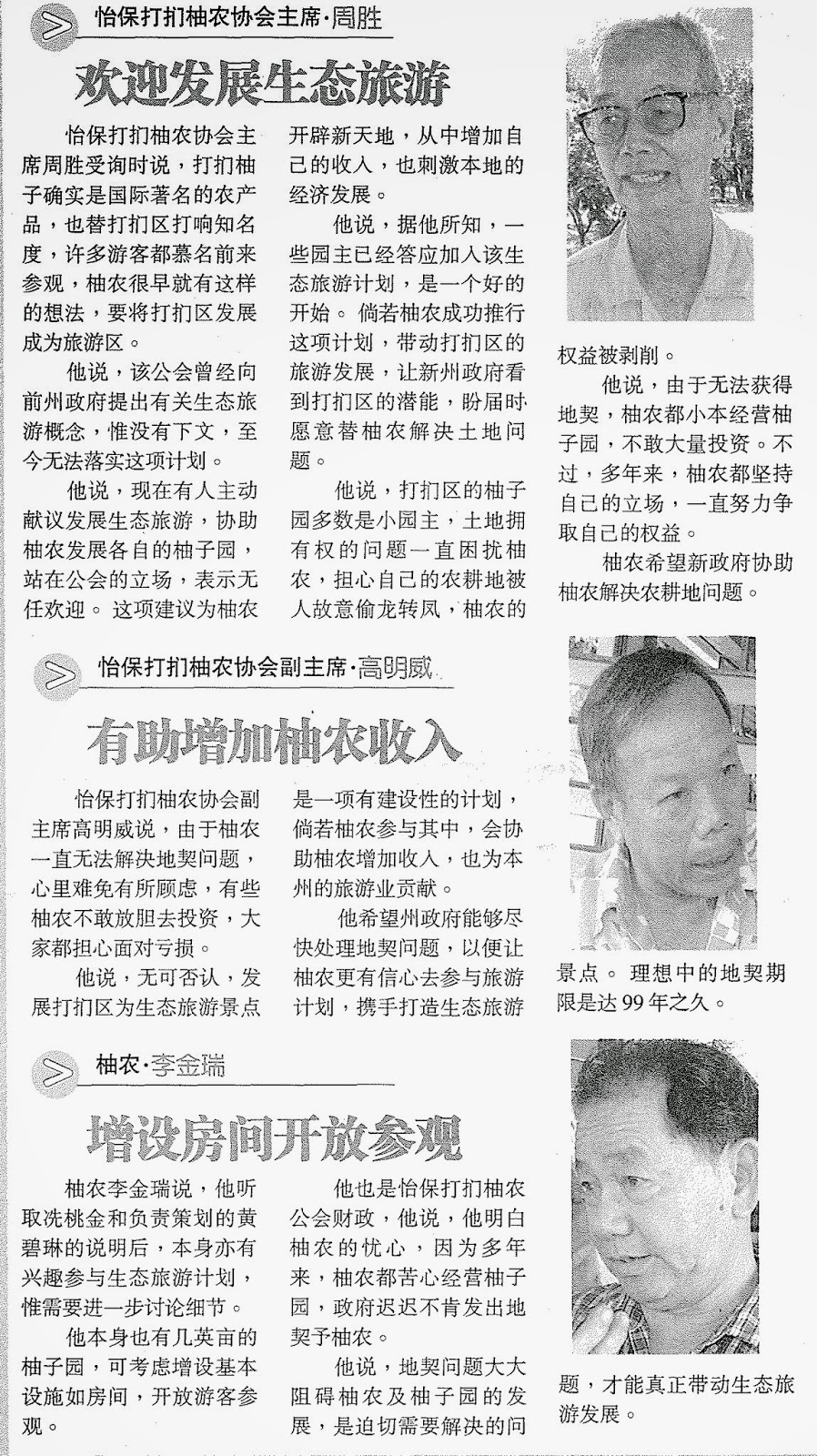来源:南洋商报,30-07-2008
Sunday, January 12, 2014
From ‘Hairy Fruit Cape’ To Tambun Temples
Source: The Star, 11,November 2007
After discovering fascinating titbits, of the historical and edible kind, in Chemor last week, we continue our Kinta Valley journey and encounter Perak’s magnificent natural heritage.
THE small towns around Ipoh are like huge, three-dimensional history books of stone and wood, holding intriguing stories of how this nation came about.
On a “discovery trail” organised by the Perak Heritage Society (PHS), we move southwards from the charms of Chemor to look for clues to the past at Tanjung Rambutan.
What a name. Was there ever a cape (tanjung) on a river bend with lots of hairy rambutan fruit trees in the far off mists of time?
 |
| The unique Pencil Rock is now privatised into the Lost World of Tambun theme park.There are no records of this, but by 1892 Tanjung Rambutan was bustling with tin mines, notes Khoo Salma Nasution and Abdur-Razzaq Lubis in Kinta Valley: Pioneering Malaysia’s Modern Development (Areca Books).
A British expedition going up the “Ulu Sungei Suntu” (Upper Suntu River) en route to the second highest mountain of Peninsular Malaysia, Gunung Korbu, found Malay and Chinese miners “working together amicably” at this Cape of Hairy Fruits.
In the old days, elephants were used to transport tin and provisions between the cape and Ipoh but they were soon supplanted by “more efficient” bullock carts. Then, in 1897, the trains arrived.
“A hundred years ago, Chinese squatter vegetable farmers around here used the railways to sell their produce all over Malaya. The landscape north of town is just like it was then,” says PHS president Law Siak Hong, during one of the many briefing sessions during the trip.
|
 | ||
The Tat Choi Chinese school bears a sign for the year 1929, the 18th year of the Republic of China established in 1911 by Dr Sun Yat Sen.
Natural heritage
Tambun used to have tin mines and coffee plantations. Nowadays, it's more renowned for its natural heritage of spectacular limestone formations and, of course, its pomelos.
Before the hot springs here were commercially developed, there were fields of hot water giving off steam that added to the mystique of the craggy outcrops.
“Every community has stories of sightings of spirits here. The fifth Datuk Panglima Kinta (Lord of Kinta) was said to have disappeared here,” explains Law.
This happened, it seems, after one of the lord’s companions “heard” merry-making in the hills.
Today, much of the area has been cordoned off by a private corporation to form a gated community and the Lost World of Tambun theme park. Included in the grounds is the amazing Pencil Rock.
“This unique rock formation was created by centuries of erosion. It’s very rare. The other famous one is on James Bond Island near Phuket (off Thailand),” explains Stephen Yaw, the theme park’s sales manager.
“It’s a beautiful area. The homes used to sell for half a million ringgit. Now they are worth double that,” he adds.
|
Subscribe to:
Comments (Atom)
















